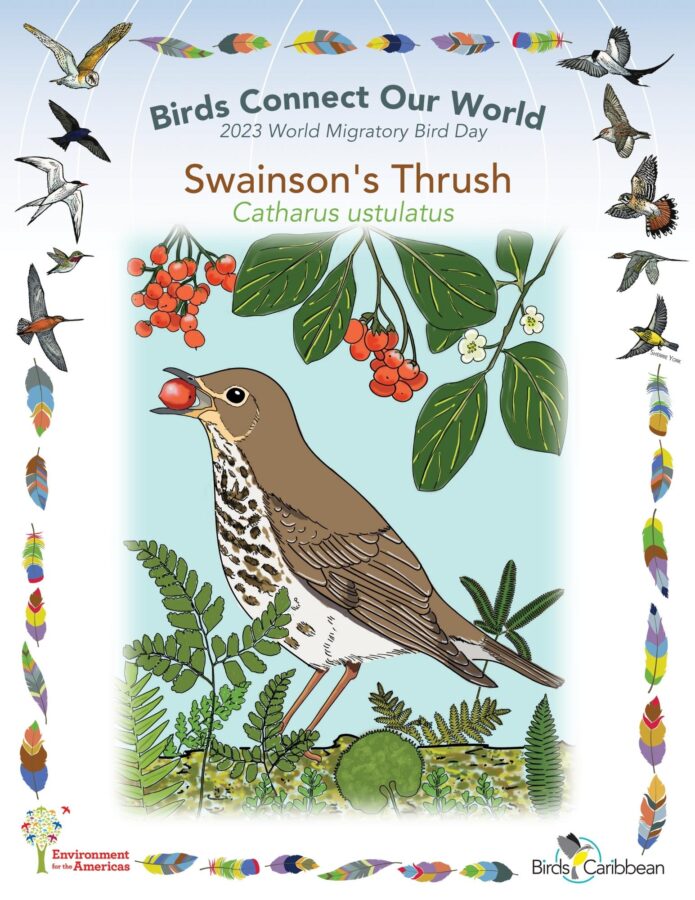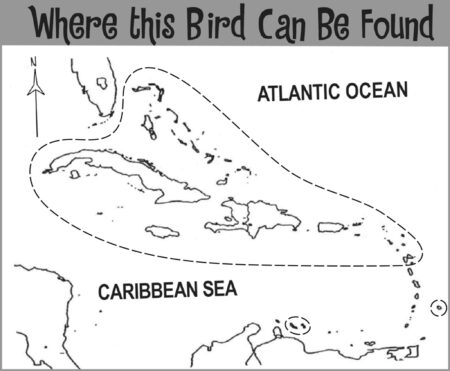Celebrate World Migratory Bird Day (WMBD) with us in 2023! This year’s theme is “Water: Sustaining Bird Life”. Have fun learning about a new migratory bird every day. We have coloring pages, puzzles, activities, and more. Download for free and enjoy nature with your family at home.
Migratory Bird of the Day: Swainson’s Thrush
If you’re not looking carefully in the forest understory, you might miss the Swainson’s Thrush! These brown, spotted thrushes blend in well amongst forest foliage, but there is no mistaking their beautiful, flutelike, upward spiraling song.
Swainson’s Thrushes fall within a genus of birds known as Catharus thrushes. These thrushes are known for foraging low to the ground. They all have a spotted breast and a solid brown back of rust or olive, that varies in shade between species. Other thrushes within this genus include the Hermit Thrush, Veery, Gray-cheeked Thrush, and of course, our Caribbean overwintering Bicknell’s Thrush. Swainson’s Thrush can be distinguished from the others by their buffy colored eye rings and buffy coloration in the lores (between the eye and bill) which give these birds the appearance of wearing buffy spectacles!
Unlike their counterparts, Swainson’s Thrushes use more aerial fly catching techniques to obtain their insect prey—though they are quite fond of fruits during their migration. They also forage higher off the ground in comparison to other Catharus thrushes.
Did you know that there are actually eight different forms of Swainson’s Thrush all differing slightly in coloration? This has led to the recognition of different subspecies. Typically they all fall within the russet-backed and olive-backed forms. Interestingly enough, it’s hypothesized that these different subspecies might actually take different migratory routes and even overwinter in different locations! Russet-backed birds typically overwinter in Middle America while olive-backed birds continue to South America.
These birds can spend the winter anywhere from Southern Mexico to Northern Argentina! There is an international collaborative project currently underway which uses Motus technology to tag Swainson’s Thrush at different spots along their migration to better understand which routes different subspecies are taking. Banding data has shown us that Eastern and Western populations both take different routes and overwinter in different locales. The same populations might even take different routes in the spring and the fall! We’re excited to see what insights Motus technology can give us about these long distance migrants. Be sure to check out the Caribbean Motus Collaboration to learn more about how this technology is being used to understand migratory movements in the Caribbean.
Within the Caribbean, we typically see Swainson’s Thrushes during their fall migration. The Eastern populations will sometimes pass through Western Cuba on their way south. They’re considered a rare transient to other areas in the Western Greater Antilles, Cayman Islands, and the Northern Bahamas.
After finishing their spring migration, Swainson’s Thrushes breed in northern spruce forests, and in California in riparian woodlands. Although still considered one of the most abundant birds of northern spruce forests, their populations have been steadily declining. The reasons for this are unclear, but could be attributed to high predation rates leading to low nest success. But it is likely that habitat changes, especially on their wintering grounds, could be a major factor.
Have you ever seen or heard a Swainson’s Thrush? Learn more about this species, including its range, photos, and calls here.
Thanks to Holly Garrod for the text and Christine Elder for the lovely illustration!
Color in the Swainson’s Thrush
Download the Migratory Birds of the Day Coloring Page! Use the picture above and the photos on this page as your guide, or look up pictures of the bird online or in a bird field guide if you have one. Share your colored-in page with us by posting it online and tagging us @BirdsCaribbean #WMBD2023Carib
Listen to the calls of the Swainson’s Thrush
Swainson’s Thrush has a frog-like “peep” call. You might also hear its distinctive ascending, flute-like song.
Puzzles of the Day
Click on the images below to do the puzzle. You can make the puzzle as easy or as hard as you like—for example, 6, 8, or 12 pieces for young children, all the way up to 1,024 pieces for those that are up for a challenge!
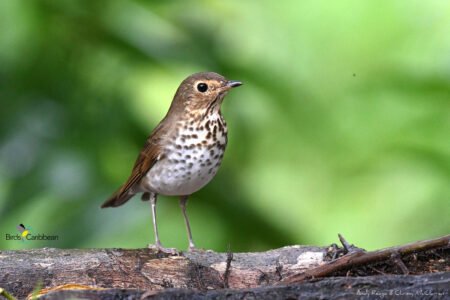
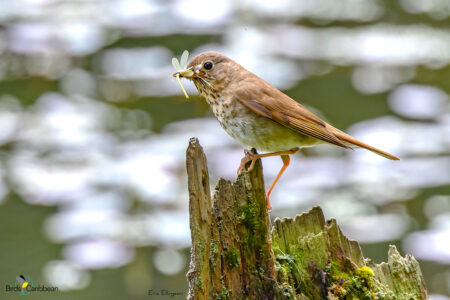
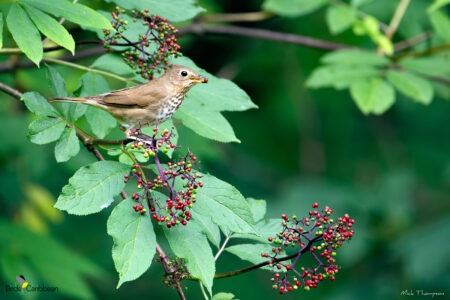
Activity of the Day
 FOR KIDS: The Swainson’s Thrush is quite a rare migrant bird in the Caribbean, which means that it is a bird that is hard to see here. But don’t worry, there are lots of beautiful migrant birds to look out for at this time of the year. From long-billed shorebirds flocking on the beaches, to the colorful gems of warblers flitting amongst the trees, there is so much to see!
FOR KIDS: The Swainson’s Thrush is quite a rare migrant bird in the Caribbean, which means that it is a bird that is hard to see here. But don’t worry, there are lots of beautiful migrant birds to look out for at this time of the year. From long-billed shorebirds flocking on the beaches, to the colorful gems of warblers flitting amongst the trees, there is so much to see!
When it comes to knowing who is who when out looking for birds, field guides and webpages with colorful illustrations, helpful maps and detailed descriptions of each bird are really useful. But these are not the only tools available to you! Have you heard of the Merlin Bird ID app? When you see a bird, you just answer some simple questions about it, and the app helps you work out what bird you have spotted! Merlin Bird ID can also help you ID a bird from a photo you have taken or a recording of the birds song! Why not head out and look for some migratory birds and then use the Merlin Bird ID app to lend a helping hand? We have handy instructions what to look for and how to use the app here. So grab you phone, binocular and camera and see what you can find!
FOR KIDS AND ADULTS: Enjoy this video of Swainson’s Thrush taking a drink in the wild!

